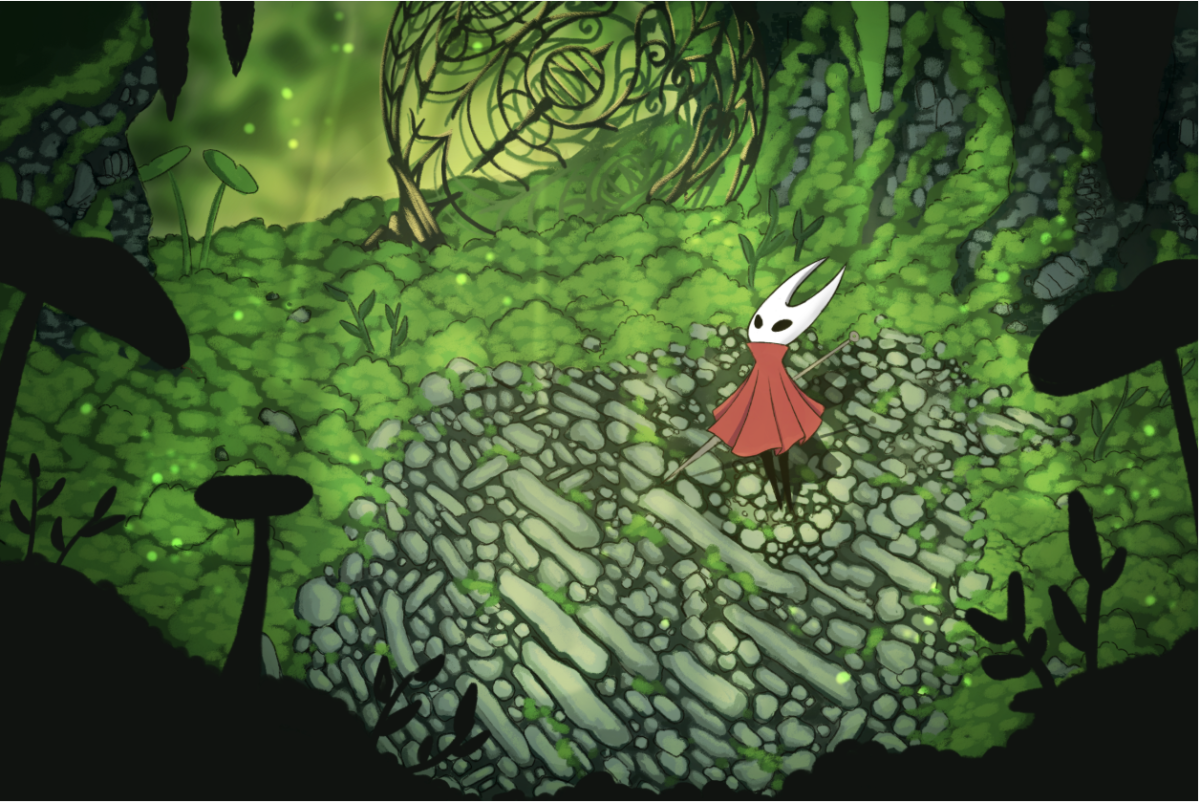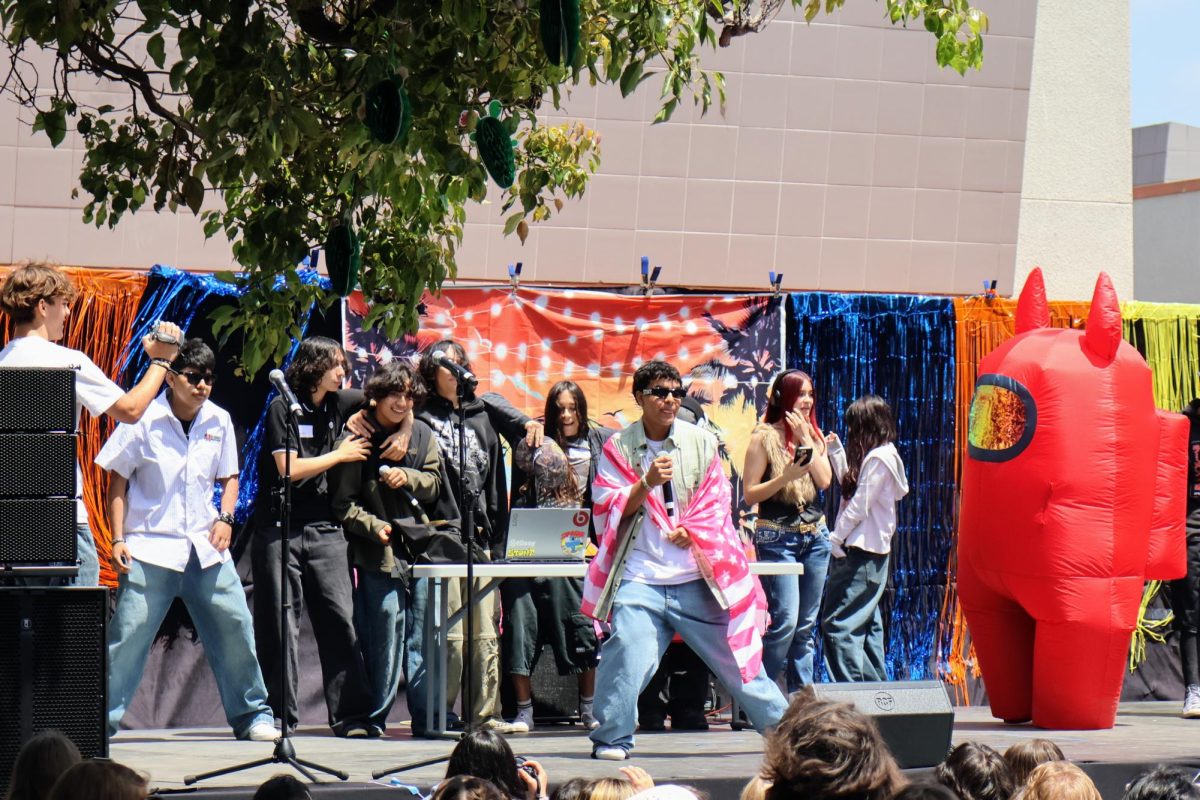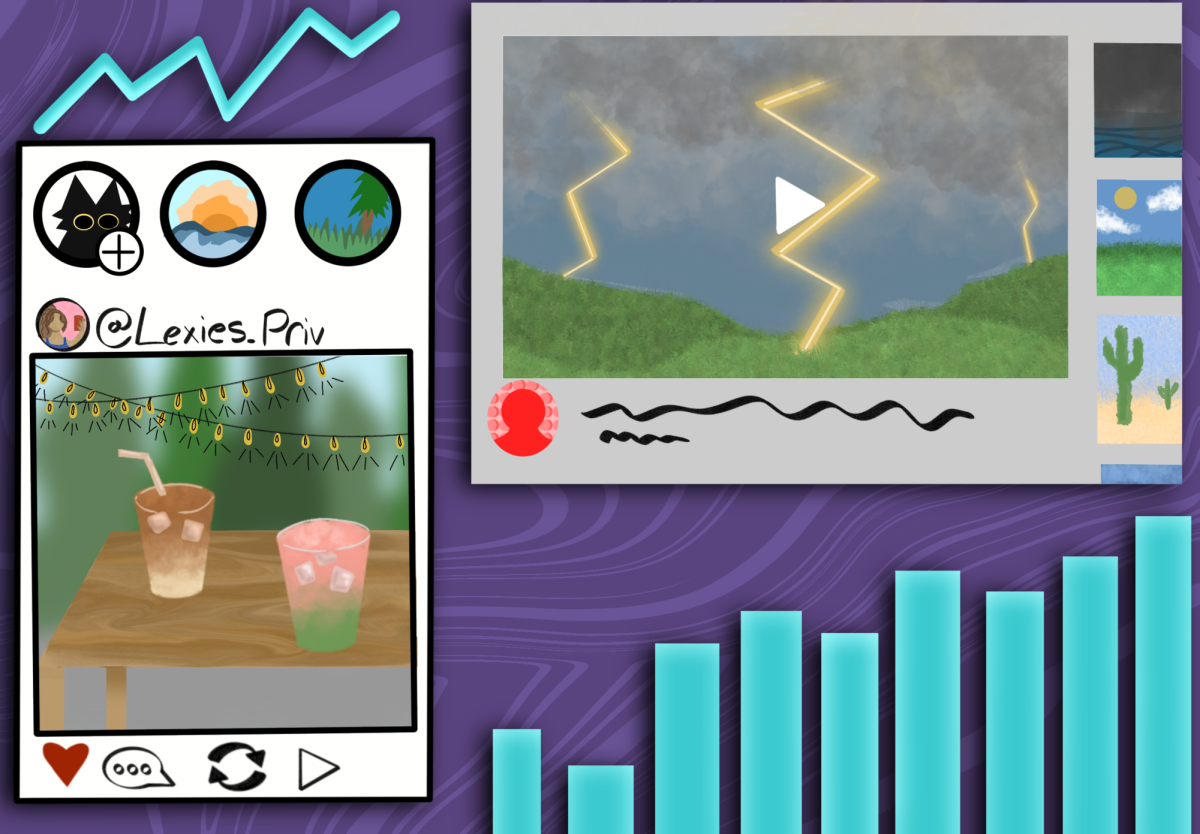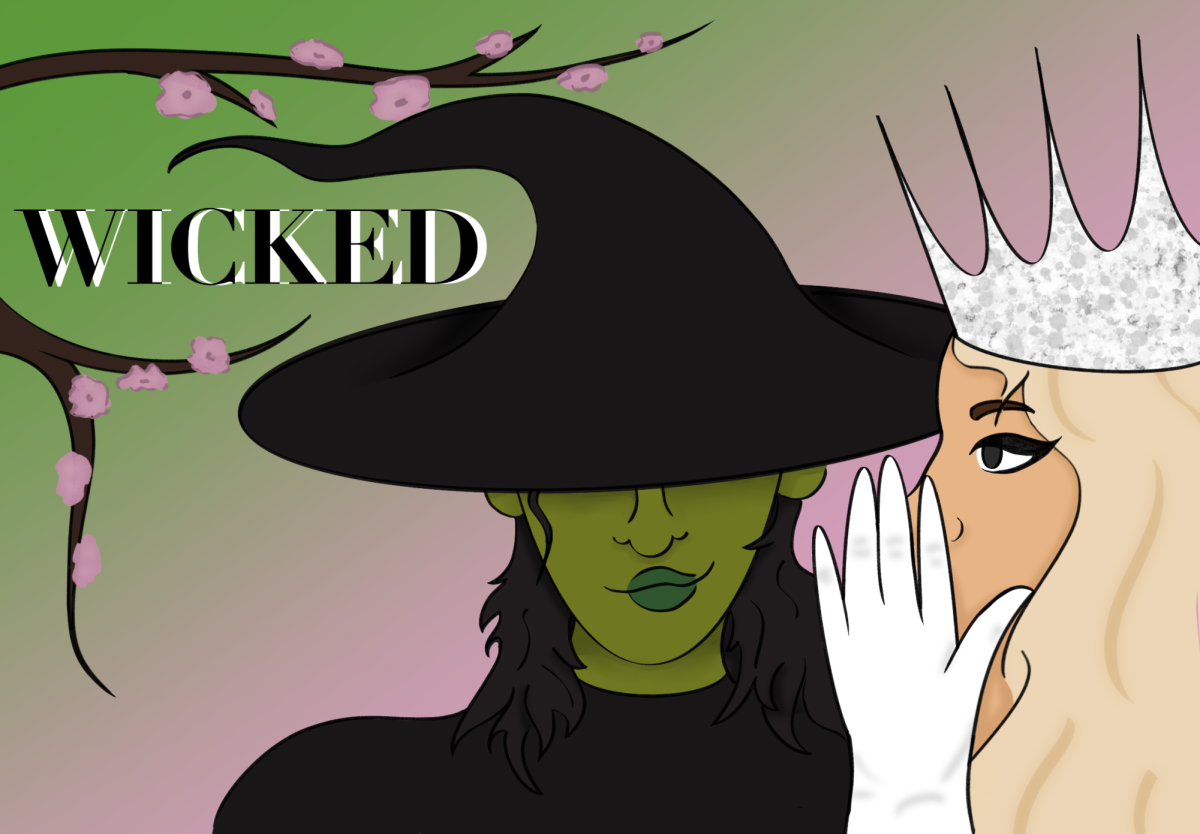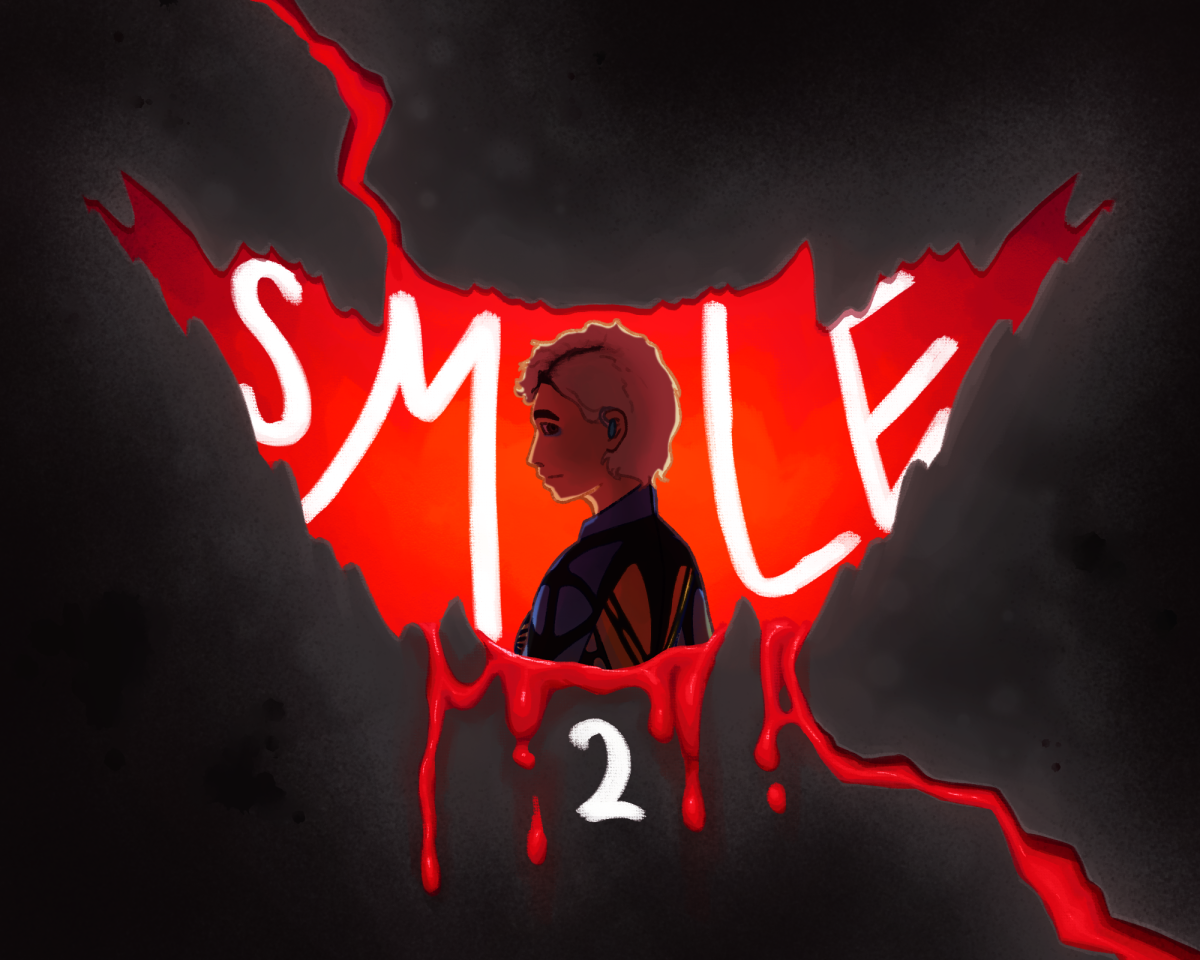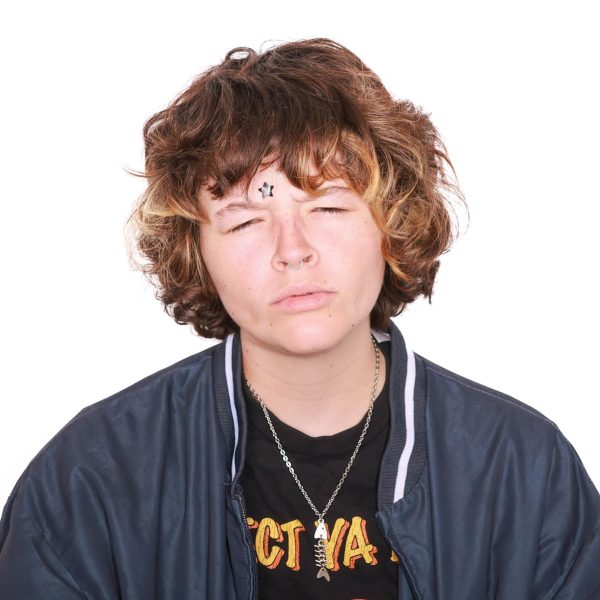“I think I like TV shows.”
A24’s latest movie, “I Saw the TV Glow,” directed by Jane Schoenbrun, is a queer, slow-burning horror film about two friends’ relationship with themselves, each other and a captivating late-night TV show, “The Pink Opaque.” Filled with the choking ambience of nostalgia, the cinematography is both unsettling and beautiful, capturing confusion, self-identity and suppression among the neon lights of the TV screen. With stellar performances by Justice Smith and Brigette Lundy-Paine, “I Saw the TV Glow” is a unique film expressing a queer analogy through non-linear plot and character development; it invites thought rather than providing exposition. And, it’s amazing.
Set in the static suburbs of 1996, a young Owen (Ian Foreman) is an introverted teenager who discovers “The Pink Opaque” through the older Maddy (Brigette Lundy-Paine), who is an avid fan. Airing at 10:30 p.m. on Saturday nights, “The Pink Opaque” is a creature-of-the-week based program that follows two teenagers with a psychic connection as they fight evil, reminiscent of “Buffy the Vampire Slayer” or “Goosebumps.” The two remained bonded over their teenage years, not through each other but over the TV. An older Owen (Justice Smith), finds himself still magnetized by the show, something shifting between his reality and the TV screen. Then, Maddy runs away, and “The Pink Opaque” gets canceled on a cliffhanger finale before season 6.
A decade after the disappearance, Owen suddenly encounters Maddy at an empty grocery store late at night. Maddy explains that “The Pink Opaque” is not just a TV show, it’s their real lives in a disembodied version of media, and they’re trapped on the other side of the screen. The two teenage characters from the show, Isabel (Helena Howard) and Tara (Lindsey Jordan) are Owen and Maddy’s true identities. This life was not the one they were meant to lead.
Maddy invites Owen to return to “The Pink Opaque” by burying himself in a coffin and disassociating from his body back into Isabel’s, as Maddy had done with Tara. Mr. Melancholy, the big bad from “The Pink Opaque,” had attacked Isabel and Tara in the show, burying them alive and taking their hearts out. In doing this, he sent them to The Midnight Realm, Owen and Maddy’s world. She warns him that staying in this town will suffocate him, and the only way to become his true self is to join her plan and bury themselves alive. This concept is the heart of the movie: choosing to leave behind your old self rather than being forced to be buried alive with them and repressing what you subconsciously feel. Owen doesn’t believe Maddy — it’s just a TV show — despite deep down knowing there was always something vividly real about “The Pink Opaque,” and something vividly wrong about his world.
Owen never followed Maddy. Years went by in the blink of an eye, and he stayed stuck in the same town, the same house, as the same person. He suffered a slow mental spiral, breaking down screaming at work and throwing up dirt. He was being buried alive; Owen was suffocating.
Schoenbrun captures this allegory of transitioning and self-identity in an intimate, uncomfortable and unfinished way. Despite the horrifying and saddening reality of Owen slowly dying without ever becoming Isabel, Schoenbrun also urges an interpretive positive message, summarized by a sidewalk chalk saying shown throughout the film: “There is still time.” Unlike Maddy, who was able to reach “The Pink Opaque” and realize her identity, Owen’s ending remains incomplete, the film stopping abruptly as he says “I’m sorry” to the guests at his work. The way the movie concludes is especially somber, considering that Owen represses himself and apologizes to people around him who don’t care about him as a person, despite Maddy previously telling him that he should never apologize.
This is the horror aspect of the film — the terror of being stuck in a reality you know is somehow wrong, but never escaping — that audiences might’ve criticized. But, there is still time, and suppression will only lead to an ending similar to Owen’s. Shoenbrun is addressing the genderqueer audiences who understand the allegory, a message that critics of the movie missed. Rather than providing a straightforward plot, dialogue and exposition, “I Saw the TV Glow” offers an off-putting, uncomfortable and unfinished love letter to the trans experience.
Aside from the deep messaging of the film, the cinematography and ambience of the film are otherworldly. The lighting is composed of saturated neons of pink, blue, green and purple, contrasting the dull suburban world outside of the TV. Bathing in the colors from the glow of the TV screen, Owen and Maddy are captivated by “The Pink Opaque,” whereas the mundaneness of their reality is the direct opposite. The film builds its themes through a static feeling of ambience, both with the characters’ acting and the score, written by Alex G. The music embodies the idea of being constantly uncomfortable in your skin with haunting synth screeches, dissonant chords and low drones. Upon experiencing the movie in theaters, the sound surrounds you and forces you to be immersed in their world.
“I Saw the TV Glow” is a genre-bending horror allegory with superb acting, cinematography and scoring. While the broader audiences might’ve been left confused or unsatisfied, Shoenbrun provides something tangible to audiences struggling with gender identity or expression in an intimate, emotional way.




